
The Business of Fashion
Agenda-setting intelligence, analysis and advice for the global fashion community.

Agenda-setting intelligence, analysis and advice for the global fashion community.
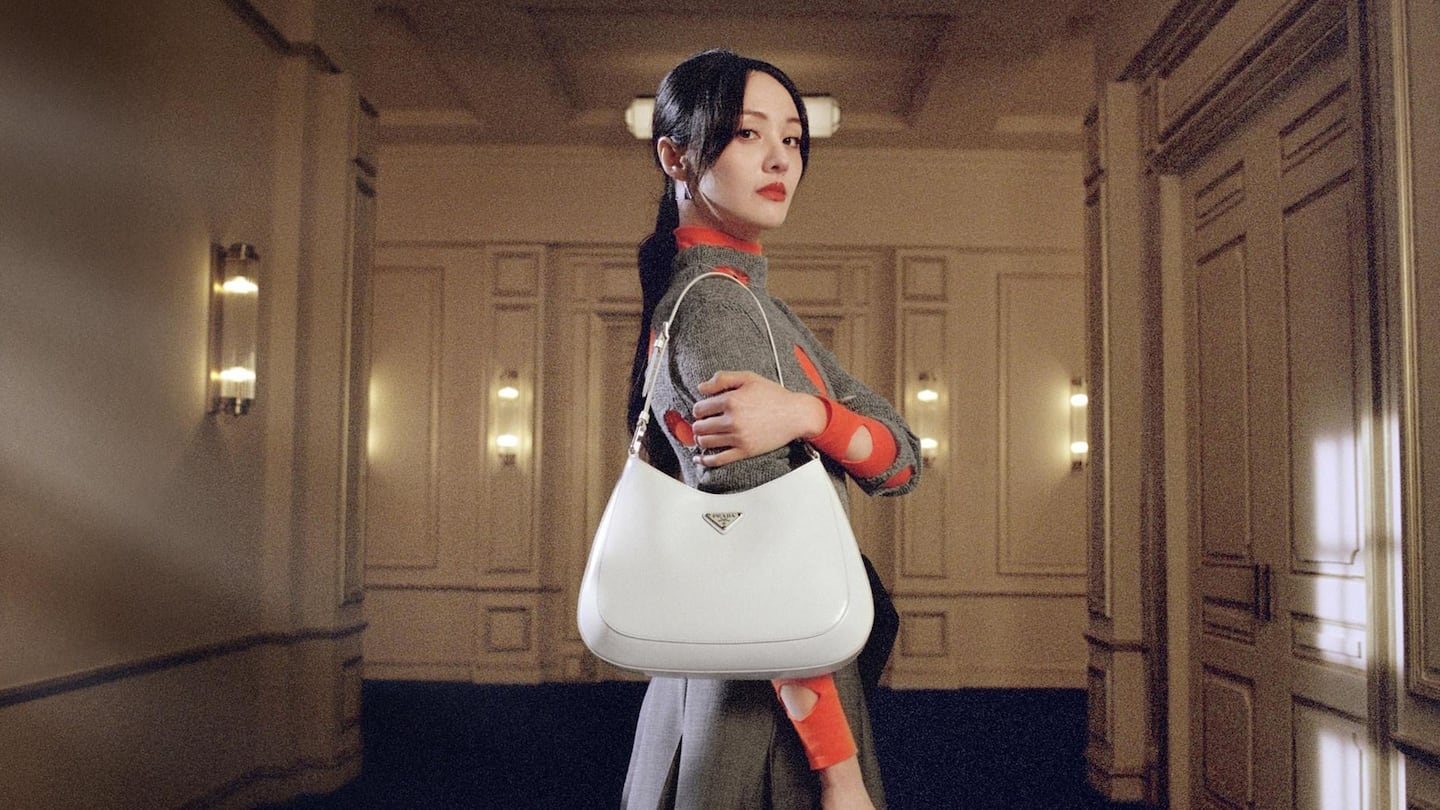
For better and worse, Prada started 2021 with a bang in the all-important China market.
The Italian luxury brand reported blockbuster sales growth in China in the latter half of 2020. But that momentum was threatened by a scandal involving a newly appointed celebrity ambassador, Zheng Shuang, who has been accused by her ex-partner of abandoning the couple’s two children, delivered by surrogates, in the US. Prada quickly parted ways with Zheng.
In a country where consumers are fast to “cancel” brands for perceived missteps, Prada clearly saw cutting ties and moving on as its best bet. Still, the scandal has come at a most inopportune time for the Italian house, which had just begun to see an overhaul of its Chinese business start to pay off.
On January 5, Prada announced its earnings before interest and tax had returned to “positive territory” in the second half of 2020 amid a recovery in Asia (historically responsible for approximately half its global sales), joining other luxury brands in bouncing back from the worst of a pandemic-induced slump. The recovery was led by a 52 percent surge in Mainland China sales, which Prada attributed to millennial consumers.
ADVERTISEMENT
“China has been an important driver of the rebound… and it is expected to continue to play an important role in [our] growth strategy,” a Prada Group spokesperson told BoF.
The growth came after Prada reduced its reliance on wholesale and reined in discounts in China, driving more sales through its own stores and website, where items were more likely to be sold at full price. The brand opened new stores and kept up a regular rotation of pop-ups.
At the same time, Prada worked to grow its cultural capital with a local flavour. The brand has always had a deep connection to the worlds of art and design but, in recent years, it has more deftly embraced China’s digital celebrities.
Controversial Celebrity Ambassadors
Many credit Prada’s turnaround in China, particularly with young consumers, to one man: Cai Xukun.
The 22-year-old singer and actor, with more than 34 million fans on Weibo, has a fervent following among younger Chinese. Many of his fans feel it’s their responsibility to support their chosen idol by buying the brands he’s associated with, and talking about them on social media. They will even go to war online to defend Cai.
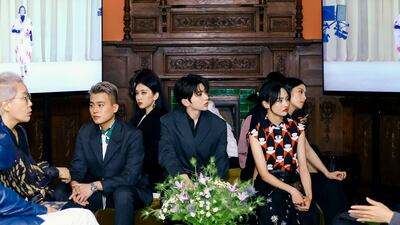
Cai’s appointment as Prada’s first Chinese celebrity ambassador in 2019 wasn’t universally lauded at the time. For many, it was a controversial choice to pair the fresh-faced boy band alum with a storied luxury brand. But almost two years on, there are few who would argue the partnership hasn’t been good for Prada.
“When they announced [Cai Xukun], we felt a little bit weird, [like] this celebrity is not so Prada, but maybe I am [just] too old,” said Duscher Tang, editor of the Shanghai-based fashion and culture publication, Modern Weekly. “The reality [is] it can’t just be the intellectuals that know and buy Prada, they need other people to know about Prada too. I don’t want to say it’s a compromise, but I think it’s a balance.”
ADVERTISEMENT
The positive payoff from this risky ambassador choice is probably what gave Prada the confidence to announce earlier this month that one of China’s most controversial female stars, Zheng Shuang (alongside award-winning actress Chun Xia), would become its new brand ambassador. The two women and Cai star in the brand’s 2021 Chinese New Year campaign.
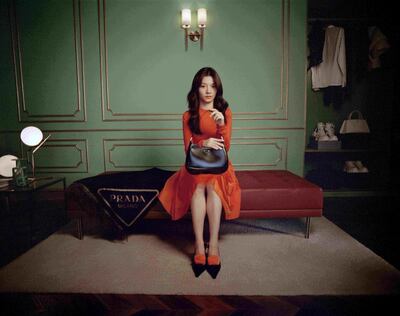
Even before the surrogacy scandal, there were widespread comments on Chinese social media that Zheng’s brand of celebrity, built on soapy idol dramas and reality television, made her a poor choice to partner with a high-end luxury brand. The blowback has been intense, with billions of views of negative posts about Zheng on Weibo, many of them drawing attention to her link with Prada.
Prada’s speedy decision to sever ties with Zheng means it should recover quickly from the rash of poor publicity it has experienced this week. The biggest long-term impact will likely be on the brand’s appetite for partnering with controversial celebrities in the future. It would be surprising to see Prada take another risk on a celebrity ambassador anytime soon.
With Cai Xukun still paying dividends for the brand and the generally well-received appointment of Chun Xia, it could also be argued they don’t need a new ambassador at all and that the brand should simply double down on the strategies that have served it well through its turnaround.
Cultural Heart in China’s Luxury Centre
One aspect of Prada’s China strategy that has set it apart from other luxury brands is the introduction of Prada Rong Zhai, a restored mansion in downtown Shanghai, which first opened in 2017 following a six-year renovation project undertaken by Chinese and Italian artisans.
“Rong Zhai is not an easy project, the restoration itself is not easy, [let alone] keeping the spirit of this old house that belonged to this important Shanghainese family. But Prada is one brand that will make that commitment to connect with Chinese culture and history,” said fashion influencer Leaf Greener.
Since opening, the mansion has become one of the cornerstones of Prada’s cultural approach to the Chinese market and a grand home for the brand’s events. Just this week, Prada Rong Zhai saw China’s fashion media and KOLs (key opinion leaders) descend on it to view Miuccia Prada and Raf Simons’ first jointly designed menswear collection in Milan, broadcast via livestream.
ADVERTISEMENT

In Shanghai, where in-person events have been back in vogue since June, Prada Rong Zhai is proving to be a useful tool for the brand.
In an era in which international travel is restricted and luxury brands are desperately trying to find meaningful ways of connecting with Chinese consumers in their home market, having a beautifully restored mansion as a cultural and event anchor simply works better than the average flagship store, particularly if it’s used effectively.
“Every time you see there is an event at Rong Zhai, there are a crowd of people waiting outside. It’s hot,” Tang said.
Indeed, Prada Rong Zhai has become a hub for art lovers in China’s most international city with exhibitions from local and international contemporary artists, including Liu Ye, Goshka Macuga, Li Qing and Alex Da Corte proving popular with a new generation of Chinese art aficionados that are accustomed to seeing big-name exhibitions blow through town, but are also hungry for art that explores identity, culture and the modern world — whether or not it is produced by a household name. Prada Rong Zhai’s exhibitions have offered just that.
“What Prada is tapping into is art that lets consumers explore alternate realities and art that lets the younger generation experiment with their own identities. That’s the kind of art that tends to really resonate,” explained Julien Lapka, founder of Shanghai-based cultural insights agency, Inner Chapter.
This is a generation that is far more likely to pursue their own creative identity than previous generations in China preoccupied with creating wealth.
This is a generation, Lapka points out, that is far more likely to pursue their own creative identity than recent generations in China preoccupied with creating wealth, so they are particularly attuned to and accepting of Prada’s brand universe, which places creativity, design, art and culture at the forefront.
“When we speak with wealthy university students or younger people in their early to mid 20s about the type of work they want to do, they aspire to become a videographer, a designer, a KOL that works in fashion, these are the aspirations of creative freedom that people want to achieve, but they haven’t been raised in an environment that talks about how to do that, leaving an opportunity for brands to intimately share information about craft and creativity with the next generation of consumers,” he said.
While it’s the structural changes to the business that have helped improve the bottom line, and cultural emphasis that has given Prada a point of difference in China, these initiatives also require a digital element, in order to both broaden the reach of the brand’s message, and its products.
The Belated Digital Embrace
Like many other luxury brands over the past two years, Prada has embraced China’s e-commerce giants, but rather than exclusively signing with one (as most other brands have), Prada has partnered with both of China’s major e-platforms, joining JD.com in 2019 and Tmall in 2020. Prada is bullish on the future of luxury e-commerce in China, with a Group spokesperson saying sales via online channels are expected to “accelerate” in the near term.
Also more overtly digital is the way Prada has taken to widening its brand message and amplifying its events and initiatives such as its Re-Nylon collections — made using recycled plastic, the brand is betting these products will be well-received by a young generation in China who have grown up intimately aware of environmental degradation and pollution.
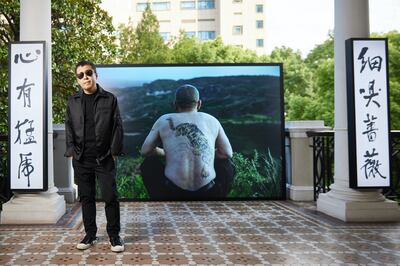
“Before, Prada’s business was slowing in the China market because it wasn’t using the new tools, wasn’t using social media and all these platforms, but once it started embracing these tools, the improvement is very fast, faster than other brands,” Greener said.
Prada has since become quite adept at using technologies, including livestreaming, to amplify not only its fashion shows, but also its cultural events. In August 2020, the fifth edition of Prada Mode, held at Rong Zhai, featured a collaboration with renowned film director Jia Zhangke, which transformed the space into a site-specific installation inspired by his cinematic work and focusing on the Chinese word mian, which has a multitude of meanings relating to noodles, face, surfaces and meetings. More than 2,000 people attended the two-day event in person, and another 200,000 participated via livestream.
The brand’s KOL strategy too, has increased in sophistication and reach. According to Launchmetrics global data, Prada’s social media capital increased significantly in China last year, with earned media value growing 60 percent in 2020, compared with a year earlier.
Prada’s continued success will hinge on the ways in which it now continues to adapt to China’s quickly changing digital landscape and uses these tools to tell a story that is relevant to young consumers in China. The story part comes naturally to Prada, as does cultural connection, but it’s the ability to continue innovating, and pushing boundaries without crossing lines in China’s volatile digital environment, that will be the key to Prada’s future in the world’s biggest luxury market.
时尚与美容
FASHION & BEAUTY
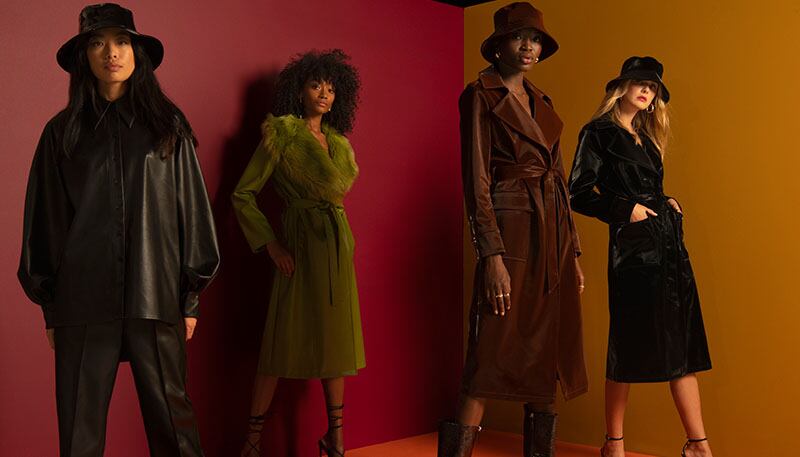
Chinese Fast Fashion Player Joins Bidding for Topshop
Shein, the fast fashion brand headquartered in China that sells mainly to Western consumers via Instagram, has reportedly entered the race to purchase the Topshop brand and perhaps other brands under the Arcadia Group umbrella. Since entering bankruptcy protection in November 2020, Arcadia has also fielded offers for its brands from the likes of Boohoo, JDSports, Authentic Brand Group and DKNY parent company G-III Group. Shein is a fast-rising player with large global ambitions. In 2020, Shein’s revenue almost doubled to 65.3 billion yuan, (nearly $10 billion), marking the company’s eighth consecutive year of revenue growth exceeding 100 percent. (Ladymax)
Michael Jordan Prevails in Long-Running Legal Dispute With Chinese Sportswear Brand
Chinese sportswear maker Qiaodan Sports has changed its name to Zhongqiao Sports two weeks after a Shanghai court ruling in favour of legendary basketball player Michael Jordan, who has long claimed the brand profited off his name (Jordan is known as Qiaodan in China) and first filed legal action against the brand in 2012. On December 30, the Shanghai No. 2 Intermediate People’s Court ruled that Qiaodan Sports must stop using “Qiaodan” in its corporate name and product trademarks. The company must also issue a public apology in print and online to clarify it has no ties with Jordan and compensate the basketball superstar 300,000 yuan ($46,400) for emotional damage. (Caixin Global)
French Beauty Brands Can Now Export to China Without Testing on Animals
China’s ANSM consumer safety agency has made France the first EU member state that can export cruelty-free cosmetic products to the lucrative market. The decision, which brands and animal welfare groups have been seeking for years, could accelerate the growth of French cosmetics players in what is currently the country’s fourth-largest destination for beauty exports, according to the French Federation for Beauty Companies (FEBEA). The exemption only applies to “ordinary” cosmetics, a term including everyday makeup, haircare and fragrance products, as opposed to “special” cosmetics like hair dye and sunscreen. (FEBEA Press Release)
科技与创新
TECH & INNOVATION

Douyin Launches Its Own Payments System
Douyin, the Chinese version of TikTok, this week launched Douyin Pay, a payment service that gives users the option to pay with it in addition to Alipay and WeChat Pay within the short video app. Douyin Pay supports top-up, cash withdrawal, transfer and inquiry functions, and supports bank cards from ten banks. This is a further move for Douyin to “close the loop” by offering more and more of its own services, including e-commerce and now payments, within its own eco-system and lessening its reliance on competitors Alibaba and Tencent. Data released earlier this months showed Douyin has more than 600 million daily active users in China. (CN Tech Post)
WeChat Makes E-Commerce Advances
WeChat facilitated 1.6 trillion yuan (close to $250 billion) in annual transactions through its mini-programmes in 2020, double the transaction value from 2019, the social networking giant announced at its annual developer conference this week. This growth helps further the company’s goal to strengthen its fintech business, which counts digital payments as a major revenue driver. Late last year, WeChat surpassed 1.2 billion monthly active users. (TechCrunch Asia)
消费与零售
CONSUMER & RETAIL

Hainan Offshore Duty Free Sales Up 127% In 2020
Sales at Hainan’s offshore duty free shops (including tax-paid items) rose by 127 percent year-on-year in 2020 to 32.74 billion yuan ($5.05 billion), according to Hainan Provincial Commerce Department Deputy Director Peng Wei. The 2020 offshore duty free revenues represented over 16 percent of the province’s total consumer goods retail sales. Watches and jewellery, boosted by the removal of the previous 8,000 yuan ($1,235) limit on a single purchase, grew 3.4-fold to 4.89 billion yuan ($754 million), accounting for 24 percent of sales. Fashion and leather goods generated a 1.7-fold increase to 3.78 billion yuan ($582.8 million), or 19 percent of the total. (Moodie Davitt Report)
China Remains World’s Largest Online Market
China’s online retail sales of goods rose 14.8 percent year-on-year to 9.8 trillion yuan ($1.5 trillion) in 2020, data from the Ministry of Commerce (MOC) showed this week. China has been the largest online retail market in the world for eight years in a row, the MOC said, noting that online retail sales accounted for 24.9 percent of the country’s total retail sales volume last year. Surging online sales boosted the courier sector, with a total of 83.36 billion parcels being delivered throughout the year. (China.cn)
政治,经济与社会
POLITICS, ECONOMY, SOCIETY

Shipping Costs Quadruple to Record Highs Between China and Europe
The cost of shipping goods from China to Europe has more than quadrupled in the past eight weeks, hitting record highs as a shortage of empty containers stemming from the pandemic disrupts global trade. The cost of shipping a 40-foot container from Asia to northern Europe has increased from about $2,000 in November to more than $9,000, according to shippers and importers. Thousands of empty containers were left stranded in Europe and the US in the first half of 2020 when shipping lines cancelled hundreds of trips as coronavirus lockdowns caused a sudden slowdown in global trade. When western demand for Asian-made goods rebounded in the second half of the year, competition among shippers for available containers sent freight rates soaring. (The Financial Times)
Chinese Economic Growth Outpacing Pre-Pandemic Rate
The country’s GDP beat expectations by rising 6.5 percent in fourth quarter of 2020. While major economies like the US and UK have yet to emerge from the throes of Covid-19, China’s economy — despite seeing a sharp decline during Q1 2020 — expanded 2.3 percent during the year, making it one of the only global markets to grow last year. December retail sales in China failed to beat expectations, but analysts forecast a turn for the better this year, with Chinese economists estimating a 15 to 20 percent rise in consumer spending domestically in 2021, something both domestic and global brands will be anticipating. (Global Times / South China Morning Post)
China Decoded wants to hear from you. Send tips, suggestions, complaints and compliments to our Shanghai-based Asia Correspondent casey.hall@businessoffashion.com.
With consumers tightening their belts in China, the battle between global fast fashion brands and local high street giants has intensified.
Investors are bracing for a steep slowdown in luxury sales when luxury companies report their first quarter results, reflecting lacklustre Chinese demand.
The French beauty giant’s two latest deals are part of a wider M&A push by global players to capture a larger slice of the China market, targeting buzzy high-end brands that offer products with distinctive Chinese elements.
Post-Covid spend by US tourists in Europe has surged past 2019 levels. Chinese travellers, by contrast, have largely favoured domestic and regional destinations like Hong Kong, Singapore and Japan.